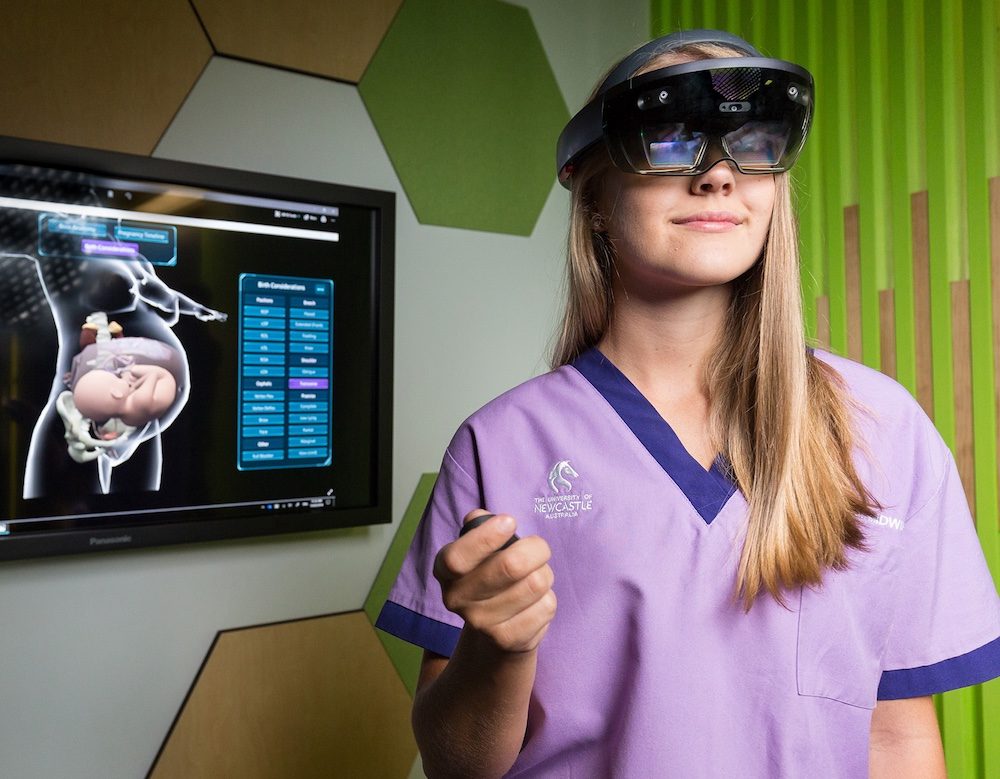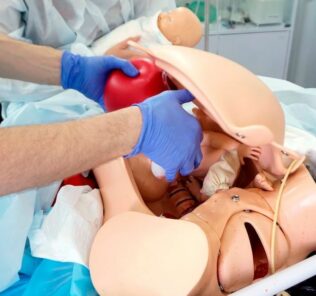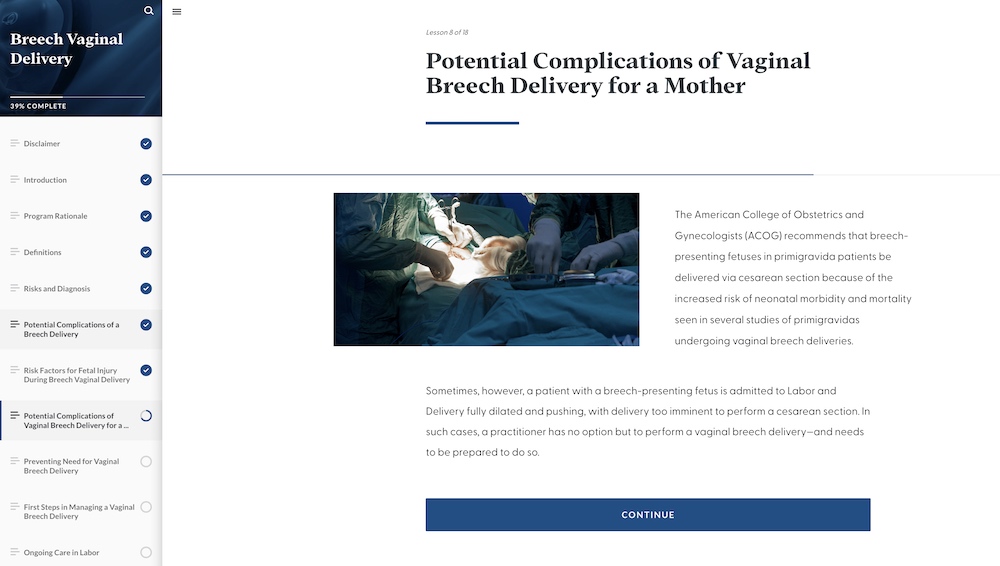University of Newcastle Australia Creates Healthcare Learning VR Simulations
VR Training has a strong future in Healthcare Simulation, as the University of Newcastle Australia has demonstrated with two new powerful virtual reality learning programs for Oral Health Therapy and OB gestation. Lead by Lecturer Mrs. Denise Higgins (for the Oral Trainer), and Lecturer Mr. Donovan Jones (for the OB trainer) the two programs benefit learners with personal and 1st person experiences otherwise not possible through other learning mediums. The University’s Newsroom recently covered these two innovative programs which we are highlighting today. Last week we covered some of the latest trends in VR for healthcare simulation, but these applications are so relevant they deserved their own special consideration!
Oral Health VR Training for Anesthetic Needle Administration & More
Denise Higgins, Lecturer in Oral Health and Simulation Coordinator, explains the ground-breaking anesthetic VR program at the University of Newcastle’s Ourimbah campus. As part of her PhD, Mrs Higgins has explored a myriad of inventive options to enhance the teaching and learning experience, including developing her own simulator model mouths made from synthetic ‘skin’ which replicates real human tissue for students to practice on. Mrs Higgins said regarding Oral Health VR “Administering anesthetic needles is an incredibly intricate process, and not something many feel confident doing without extensive practice. Ultimately, we want our patients to feel safe, comfortable and at-ease, which is why it’s crucial to ensure our students feel confident entering the patient clinic.”
The program, a collaboration between the University’s IT Services Innovation Team and School of Health Sciences, aims to bridge the gap between the classroom and clinic to ensure students are confident and capable when administering delicate anesthetic needles. Utilizing an Oculus headset, the wearer is transported to a virtual dental clinic, where a patient awaits a procedure. Students can access a range of scenarios, including procedures requiring palatal injections to the roof of the mouth and interdental injections between the teeth. A target point gives students the ideal mark to place the needle and a virtual gauge displays the milliliters being administered once the user engages the needle.
Sponsored Content:
“What’s fantastic about this new program is we’ve been able to replicate typical scenarios an oral health practitioner would perform on a daily basis – things like administering dental injections in areas that would help anesthetize nerves for pain management and patient comfort,” Mr Williams said. “Simulation is a wonderful teaching resource as students can participate in a controlled, standardized and safe environment. They can stop the simulation at any stage to review their progress or if they need to turn to teachers and peers for support. “We hope the tool will be useful on a global scale and may eventually apply to anyone working in the field.” No stranger to innovation, Mrs Higgins has worked tirelessly with the Health Sciences team at the University of Newcastle to revolutionize the Bachelor of Oral Health Therapy in recent years, introducing ground-breaking new equipment to complement student studies.
Acting Head of Discipline, Associate Professor Janet Wallace, said the steps the University was taking to introduce simulation into the curriculum was solidifying its position as a leader in this field. “Students are really benefitting from the fact that the equipment they’re using is new, different, and fully interactive, and it is supporting their theory with practical experience. It’s visual, can give them feedback on their efforts, gives them confidence and a competitive edge when they enter the workforce,” Associate Professor Wallace said.
“We’re encouraged to think outside the box and implement new ideas to enhance teaching and learning here at the University of Newcastle, and I am proud to say I work alongside some of the brightest minds in Oral Health,” Mrs Higgins said.
Sponsored Content:
“Our second and third year students are trialling the technology this semester, and so far we’ve had really positive feedback on how the virtual simulation is supporting their studies. I’m really looking forward to seeing positive student outcomes as well as continuing to investigate new ways to enhance teaching and learning experiences.”
Road to Birth Gestation Learning VR
Through the use of a digital headset, Road to Birth takes users on a journey through pregnancy, depicting a life-size female figure in front of them, whose gestation can be explored and observed.
Incorporating a pregnancy timeline, key anatomy and circulatory systems, as well as expert commentary from experienced midwives at each stage of pregnancy, users can employ the program to investigate the internal changes as the baby develops. A collaboration between UON’s School of Nursing and Midwifery and IT Innovation Team, key features include crucial birth considerations like the baby’s orientation and placental positioning.
With childbearing and postpartum stages challenging to teach with current resources, Road to Birth offers students a world-first opportunity to follow a detailed, realistic and 3D figure through a pregnancy without any visual barriers. Project lead and Lecturer in Midwifery, Mr Donovan Jones, acknowledged the delivery room could often be a dangerous place, with common issues such as the incorrect positioning of the placenta having the potential to be catastrophic. “At the moment we teach with dolls and pelvises, and I can tell you firsthand from being a student as well as an educator, the position of the placenta is one of the hardest things to learn, and yet it’s absolutely one of the most imperative things to know. “If a midwife can’t identify its position and lets the woman go into natural labour with the baby obstructed, the baby’s life is at serious risk – simple as that,” Mr Jones explained.
This ground-breaking use of #VR technology will give #health practitioners and expectant parents a world-first window into the internal stages of pregnancy. #worldneedsnew
Read more: https://t.co/96uPpm3pTT pic.twitter.com/A8lSiT7V0w
— UONnews (@Uni_Newcastle) March 1, 2018
“The scope of Road to Birth is clear, with its impact having the potential to reach a global audience, from students and health professionals in cities and remote locations, to expectant parents wanting to understand more about their pregnancy. Keen to continue the evolution of the application, Mr Williams said Road to Birth’scapability would evolve to meet the needs of future users.
UON has established itself as a leader in the VR field, with its neonatal resuscitation simulation receiving impressive accolades in 2017. IT Innovation Manager, Mr Craig Williams, said the tailored, user-driven resource was a continuation of UON’s ground-breaking work in virtual education. Visit the University of Newcastle Australia links below to learn more:
UON News: Road to Birth OB VR Training
UON News: Oral Therapy VR Training
Lance Baily, BA, EMT-B, is the Founder & CEO of HealthySimulation.com, which he started while serving as the Director of the Nevada System of Higher Education’s Clinical Simulation Center of Las Vegas back in 2010. Lance is also the Founder and acting Advisor to the Board of SimGHOSTS.org, the world’s only non-profit organization dedicated to supporting professionals operating healthcare simulation technologies. His co-edited Book: “Comprehensive Healthcare Simulation: Operations, Technology, and Innovative Practice” is cited as a key source for professional certification in the industry. Lance’s background also includes serving as a Simulation Technology Specialist for the LA Community College District, EMS fire fighting, Hollywood movie production, rescue diving, and global travel. He and his wife Abigail Baily, PhD live in Las Vegas, Nevada with their two amazing daughters.
Sponsored Content:




















